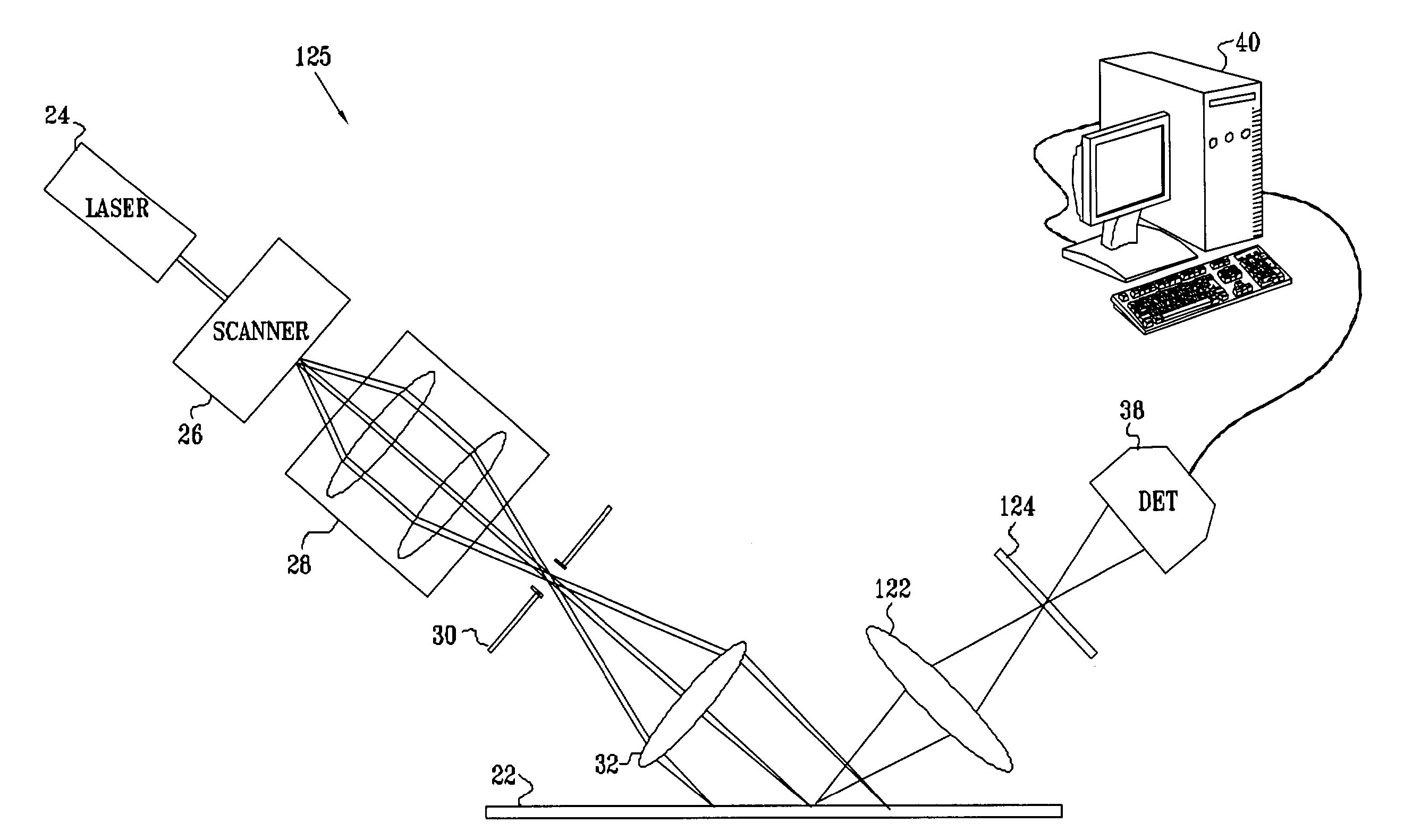Optical inspection using variable apodization
- Summary
- Abstract
- Description
- Claims
- Application Information
AI Technical Summary
Benefits of technology
Problems solved by technology
Method used
Image
Examples
Embodiment Construction
[0067]FIG. 1 is a schematic side view of a system 20 for optical inspection of a substrate 22, in accordance with an embodiment of the present invention. System 20 is designed for detecting defects in integrated circuit (IC) wafers, and applies apodization techniques, as described hereinbelow, that are particularly useful in suppressing background scattering due to patterns formed on the wafer surface. Patterns of this sort are encountered in many types of ICs, but particularly in memory devices, such as SRAM and DRAM chips. Therefore, in the description that follows of system 20 and of various apodization schemes that can be used in the system, reference is made to such patterns. It should be understood, however, that these references to IC patterns are made by way of example, and the principles of the present invention may similarly be applied to inspection of surfaces of other types. In particular, the principles of system 20 may be applied, mutatis mutandis, to inspection of lit...
PUM
 Login to View More
Login to View More Abstract
Description
Claims
Application Information
 Login to View More
Login to View More - R&D
- Intellectual Property
- Life Sciences
- Materials
- Tech Scout
- Unparalleled Data Quality
- Higher Quality Content
- 60% Fewer Hallucinations
Browse by: Latest US Patents, China's latest patents, Technical Efficacy Thesaurus, Application Domain, Technology Topic, Popular Technical Reports.
© 2025 PatSnap. All rights reserved.Legal|Privacy policy|Modern Slavery Act Transparency Statement|Sitemap|About US| Contact US: help@patsnap.com



